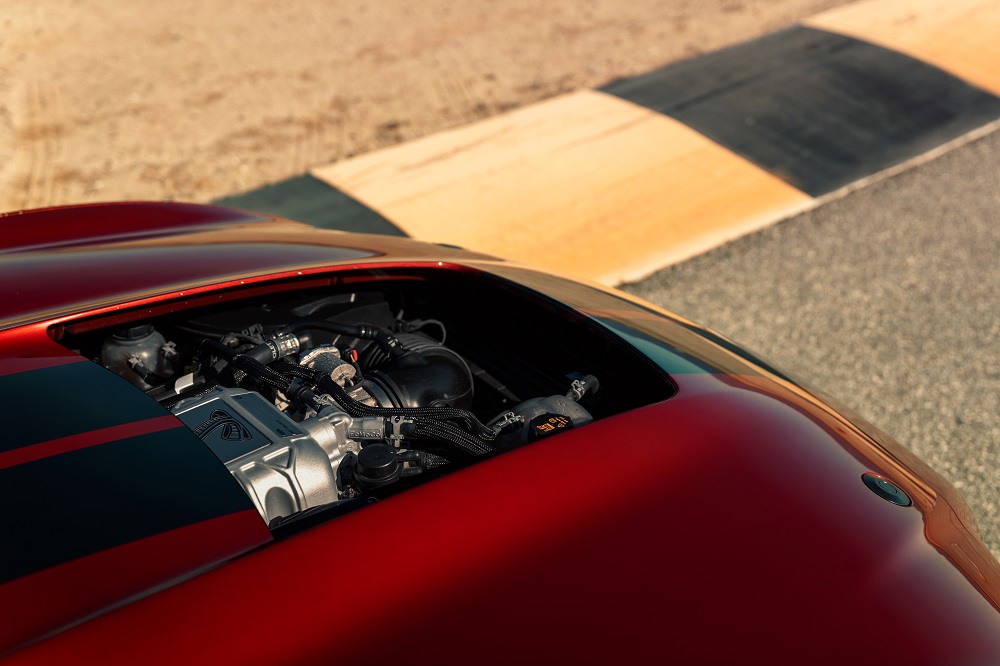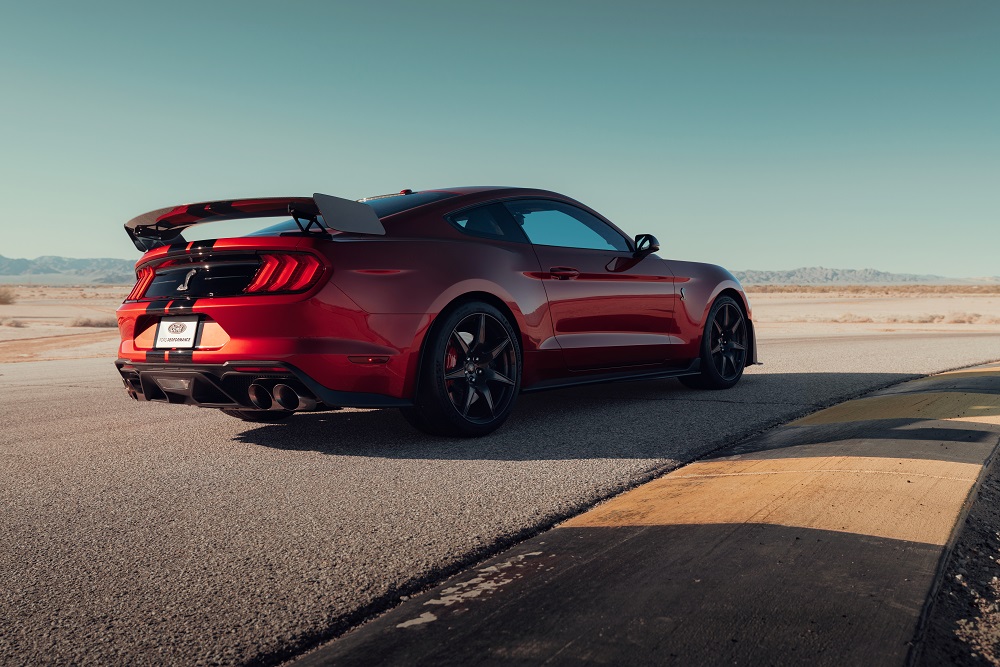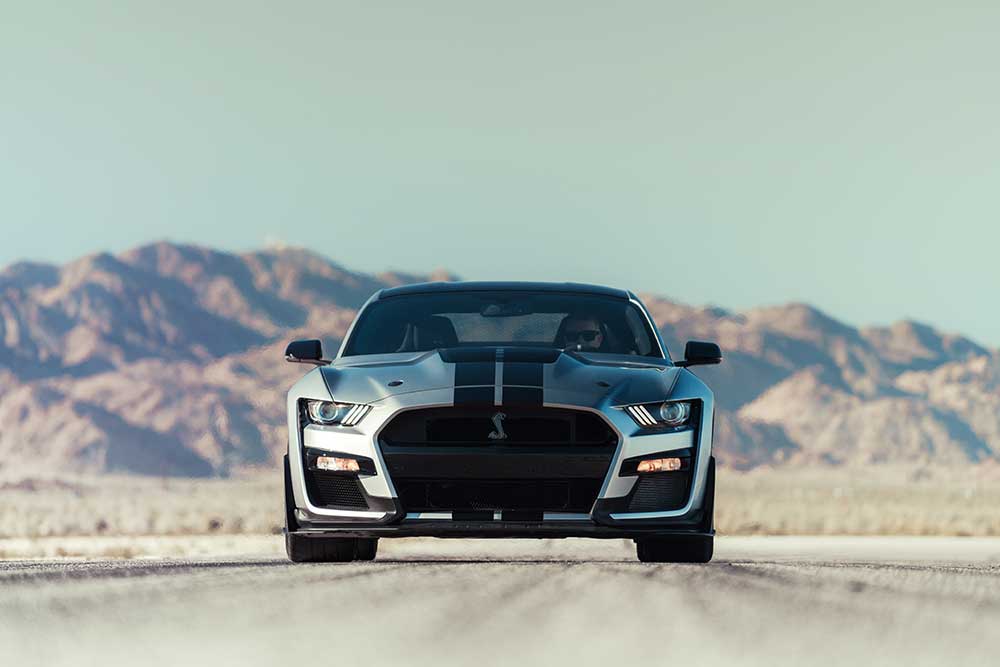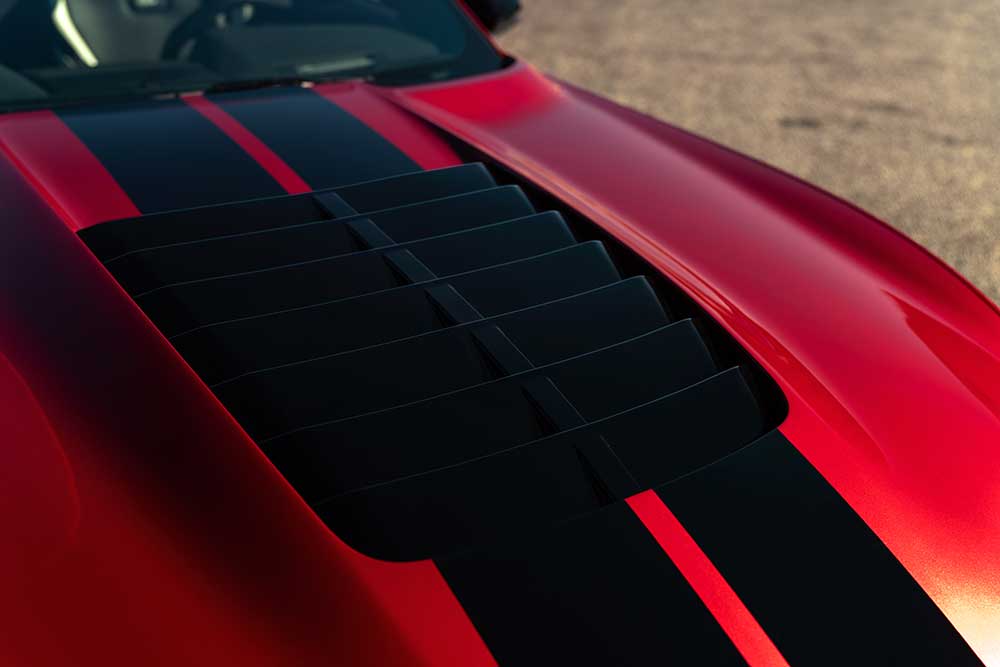2020 GT500 Predator Engine Details Emerge, Still No HP Reveal
Ford engineer Patrick Morgan lays out all the GT500 powertrain details for Automobile, but treads very, very softly.
As we continue the excruciating and seemingly endless wait to learn some concrete performance numbers from the 2020 Mustang Shelby GT500, any little hint is certainly newsworthy. For example, Ford caused a bit of a stir recently when they changed their info sign for the car from “700+” horsepower to “700++.” Which has everyone wondering – how many horsepower is that extra plus worth? Is it 25, or maybe 50?
ALSO SEE — BREAKING: 2020 Shelby GT500 Has 760 Horsepower, 625 lb-ft of Torque
If you’re as into reading between the lines as we are, you’ll undoubtedly enjoy the many tidbits teased by Ford Performance powertrain manager Patrick Morgan in this fascinating interview with Automobile. Obviously, Morgan didn’t spill the beans and give us any actual figures. But he did delve into great detail surrounding the new 5.2-liter “Predator” V8 construction and characteristics.
First up, Morgan reveals that, unsurprisingly, the new Predator shares much in common with the current Gen 3 Coyote and the GT350’s 5.2. “The core architecture is the same,” Morgan said. “It’s built at the Romeo [Michigan] engine plant and based on the that Coyote architecture. The bore and stroke are the same as the Voodoo.
However, to handle the boost from the new supercharger, Morgan admits that some changes were necessary. “We increased strength in the block and heads. Went to longer head bolts and deeper columns. We also added a fourth active layer to the head gasket and additional casting structure in the head.”
As supercharger fans know, heat soak is a real issue. And according to Morgan, Ford put a lot of effort into keeping things cool under the hood of the GT500. “It uses a bar-plate cooler—a low-temp intercooler above the supercharger rotors. A tremendous amount of effort went in to make sure we had the right capacity to keep the charge air temps down on the track.”
Interestingly enough, Ford was very close to going with a dry sump setup on the new GT500, too. But they ultimately passed due to cost, weight, and development time. Instead, they came up with an interesting solution. “We were able to put together a structural [wet-sump] oil pan that ties to the dual-clutch transmission,” Morgan said. “Inside the oil pan are trap-door baffles—one-way baffles on hinges. It traps the oil from running up the other side of the pan during high g loads.”
And even though the Gen 3 Coyote responds well to boost with a lofty 11:1 compression ratio, Ford also dialed that down a bit in the Predator. “It has a 9.5:1 compression ratio, a 7,500-rpm redline, and about 12 psi of max boost,” said Morgan. With moderate boost and lower compression, you can bet the first thing folks will do is crank things up and/or pulley down.
Above all, it’s clear that Ford was aiming particularly high with the GT500. If the car’s first-ever dual-clutch transmission didn’t already tip you off to that. Morgan reveals that Ford was targeting not just Dodge or Chevy when it developed the car, but some pretty high-dollar machinery as well.
“For the various subsystems, you tend to look further out,” Morgan admitted. “We looked at AMG and we always pay attention to features on the Corvette. Porsche is a huge benchmark from a transmission perspective; its DCT [marketed as PDK] is phenomenal. I’m always personally paying attention to the competitive V8 engines—AMG, BMW, and Audi. How they do their boosting systems, how they do the bottom-end design, their solutions to valvetrain, etc.”
Even if you aren’t willing/able to pay the lucrative markup inevitably required to get yourself a new GT500, this is great news for any Mustang fan. The fact that Ford is aiming so high with its ultimate pony car means that we all win. And truthfully, it’s quite obvious that those “other” American muscle car makers have been put on notice.
Photos: Ford Motor Company





